Key takeaways:
- Traditional art represents cultural heritage, while modern art challenges perceptions and encourages creative exploration.
- Blending art styles fosters creativity, bridges generations, and enhances emotional resonance in artworks.
- Choosing artworks involves considering emotional connections, visual narratives, and trusting personal instincts.
- Creating a cohesive gallery requires thoughtful arrangement, effective use of lighting, and storytelling through titles and descriptions.
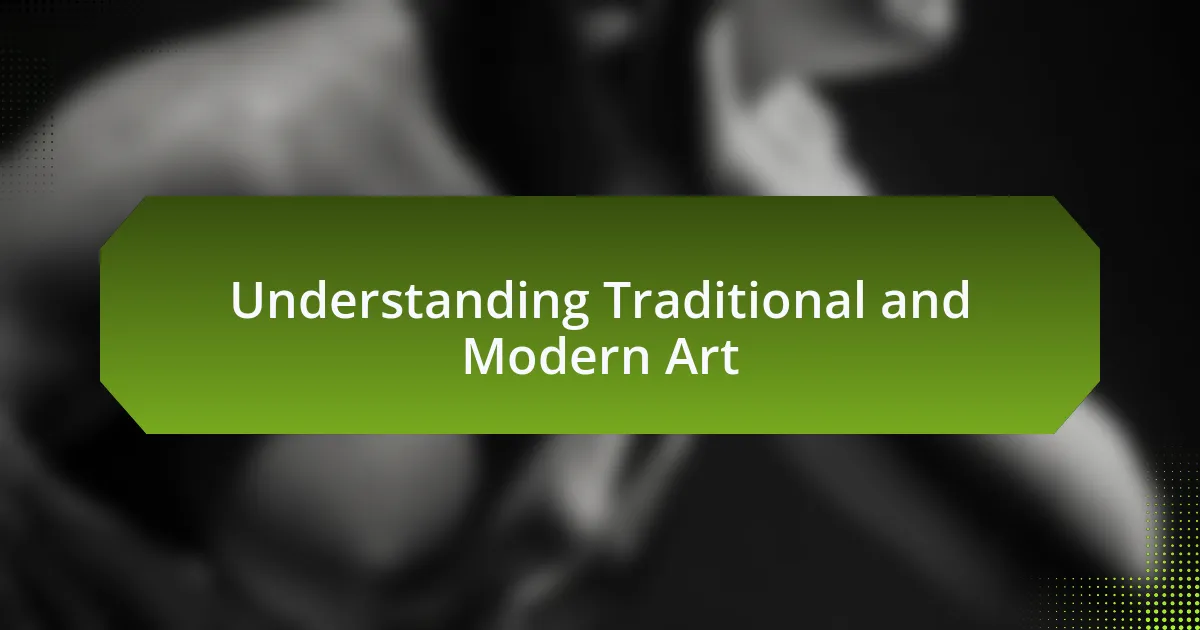
Understanding Traditional and Modern Art
Traditional art, often rooted in heritage, conveys the values and techniques of past cultures. I remember visiting a local art fair where the vibrant colors of a traditional batik fabric caught my eye—it was mesmerizing how those patterns told stories of various regions. Have you ever wondered how deep cultural connections can be woven into a single piece of art?
In contrast, modern art breaks boundaries. It invites us to challenge perceptions and explore new realms of creativity. I recall the first time I stood in front of a large abstract painting that seemed chaotic yet strangely captivating. It made me ponder: can something so seemingly disordered evoke such strong emotions? This tension between freedom and form is a hallmark of modern artistry.
Understanding both traditional and modern art involves embracing their distinctions and overlaps. For instance, I feel there’s a beautiful dialogue between the two; modern artists often draw inspiration from traditional techniques, reimagining them for contemporary audiences. Doesn’t it make you curious about how these influences shape our appreciation of art today?
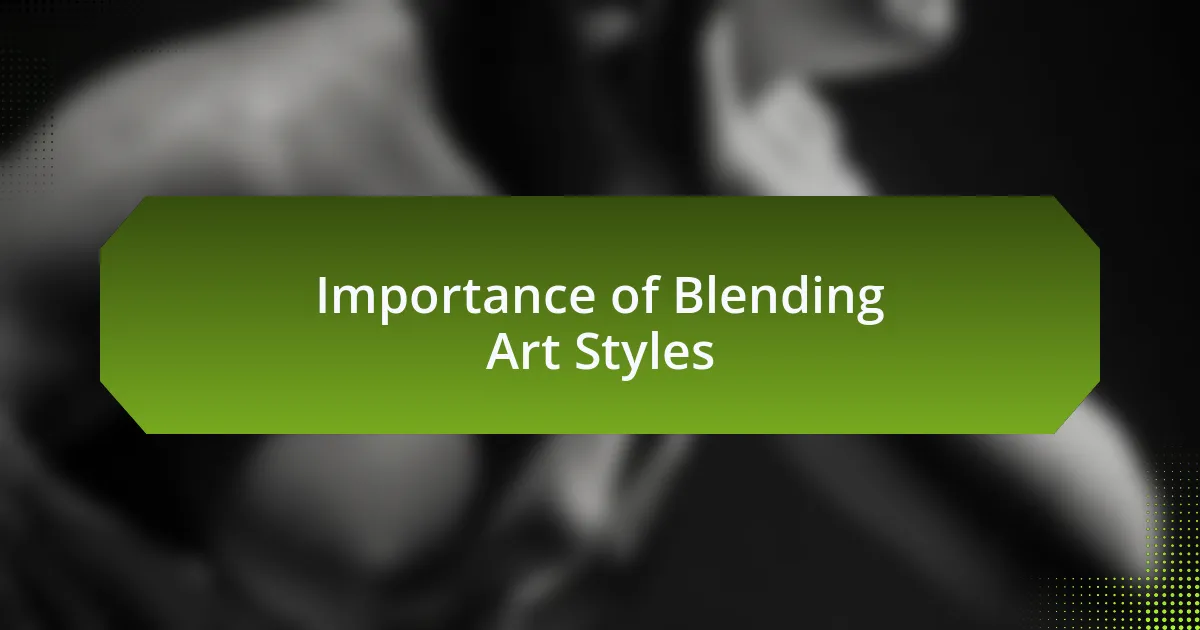
Importance of Blending Art Styles
Blending art styles holds significant importance in fostering creativity and broader expressions. I vividly remember experimenting with different mediums during a community art workshop. Mixing watercolor techniques with traditional charcoal sketches not only expanded my artistic skills but also allowed for new narratives to emerge. Have you ever tried combining styles and found that it opened up fresh ideas you hadn’t considered?
Moreover, this blending creates a bridge across generations and cultures. I once attended an exhibition showcasing modern pieces that used traditional motifs. Seeing how artists reinterpreted age-old patterns with a contemporary twist was enlightening. It left me pondering: why do we confine ourselves to strict categories when art has the power to intertwine stories from diverse backgrounds?
Ultimately, the fusion of traditional and modern styles encourages dialogue and inspires contemplation. I recall the moment I realized that a piece didn’t have to strictly adhere to one style; it could reflect a tapestry of influences. This realization compelled me to think deeper about the stories behind the art we create and consume. Isn’t it fascinating how blending styles can lead us to new perspectives?
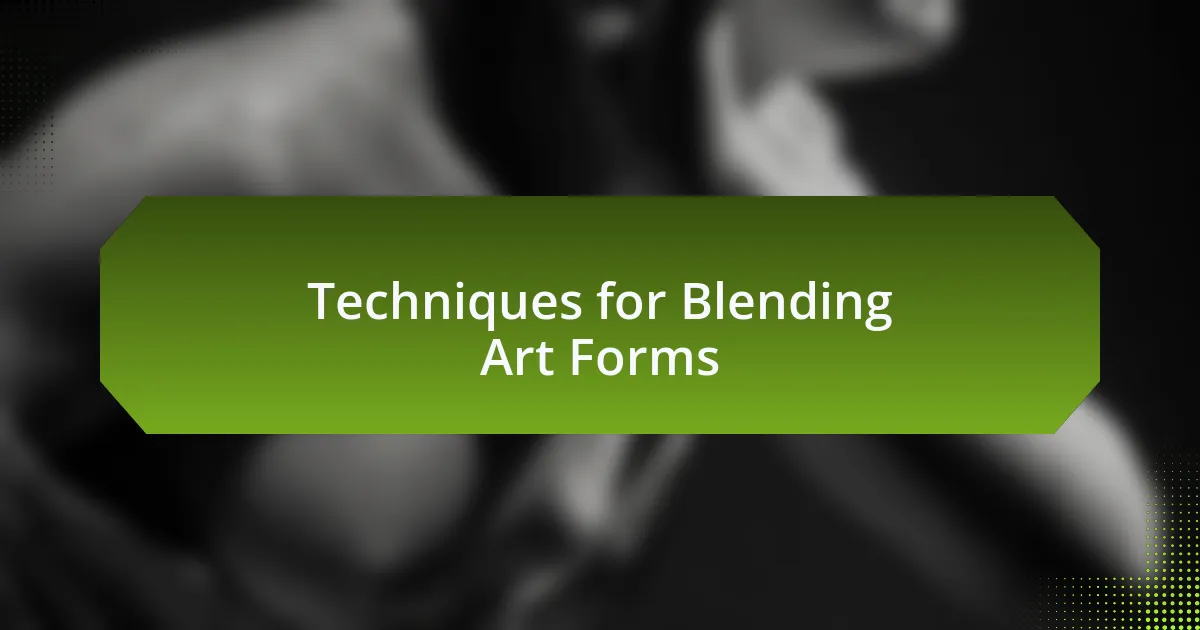
Techniques for Blending Art Forms
Techniques for blending traditional and modern art forms can be as diverse as the artists themselves. For instance, I experimented with layering techniques, often starting with a base of classic acrylics and building on it with digital elements. This not only preserved the texture of the original medium but also introduced a contemporary flair that sparked curiosity in viewers. Have you ever thought about how combining digital techniques with physical mediums might unlock new creative pathways for you?
Another approach I’ve found effective is using traditional art principles while embracing modern technology. Recently, I took a workshop that focused on augmented reality in art. By incorporating AR into my traditional paintings, the static pieces came to life, allowing viewers to engage with them in ways I had never imagined. It made me wonder: how could evolving technologies shape our understanding of classic art forms?
Sometimes, blending can be as simple as altering color palettes to reflect a more modern aesthetic while keeping traditional compositions intact. I recall working on a still life where I swapped the muted tones typical of classical approaches for vibrant, unexpected colors. This shift not only revitalized the piece but also made it relatable to contemporary audiences. Have you tried altering a classic approach to see how your own style can evolve?
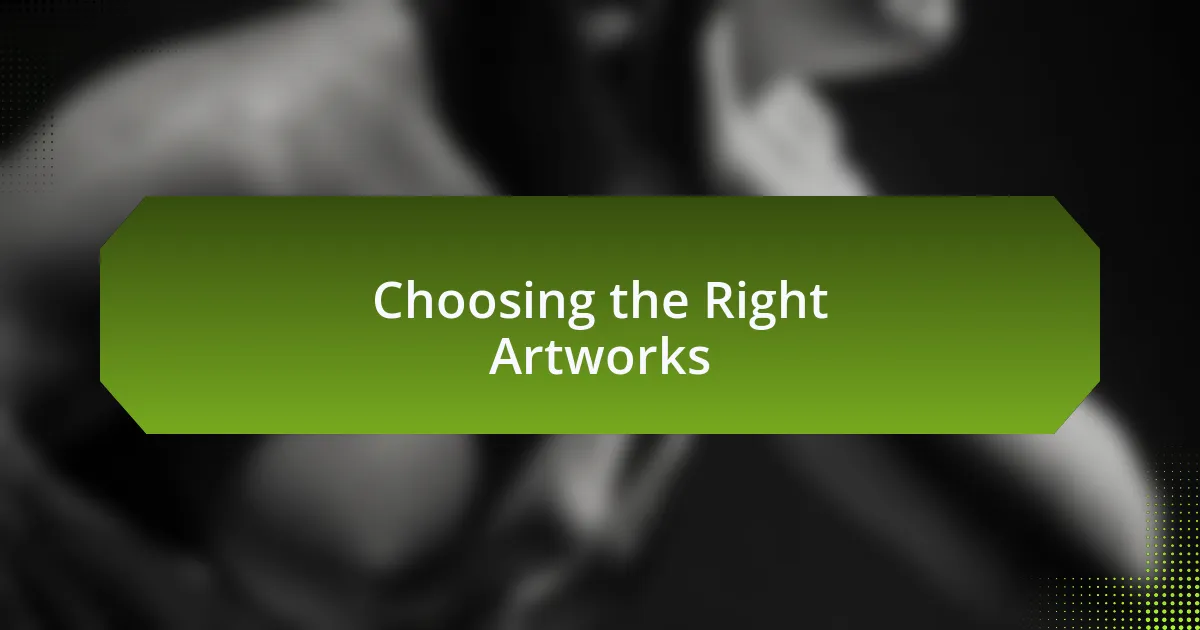
Choosing the Right Artworks
When selecting artworks for a blend of traditional and modern styles, it’s vital to consider the emotional resonance of each piece. For instance, I once chose a classic oil painting to serve as a backdrop for a modern installation. The contrast evoked a range of emotions that sparked conversations among viewers, prompting them to reflect on the relationship between past and present. How do you think the emotional ties of your chosen pieces can influence your audience’s experience?
Another key aspect is ensuring a cohesive visual narrative throughout your collection. I personally enjoy curating artworks that share common themes, even when they originate from different eras. For a recent exhibition, I selected traditional landscapes alongside contemporary interpretations that depicted urban life. This juxtaposition not only highlighted the evolution of artistic expression but also created a dialogue about our changing environment. Have you considered how the stories behind your chosen artworks weave together to form a larger narrative?
Lastly, it’s essential to trust your instincts while selecting pieces. I remember when I hesitated between a traditional portrait and a modern abstract work. Ultimately, I chose both, realizing they complemented each other in unexpected ways! That decision taught me that sometimes, the most impactful blends come from pieces that may not seem to align at first glance. How do your gut feelings influence your choices when curating your own collection?

Creating a Cohesive Art Gallery
Creating a cohesive art gallery requires a thoughtful arrangement of pieces that invite conversation and reflection. I recall a time when I set up an exhibition that paired modern photography with traditional sculptures. The way the sharp lines of contemporary art contrasted with the organic forms of the sculptures created a captivating visual flow that drew visitors deeper into the space. Have you ever thought about how the arrangement of your artwork can influence the viewer’s journey through the gallery?
Lighting and space play a crucial role in unifying different art styles. I often experiment with lighting to highlight the unique qualities of both traditional and modern pieces. During one exhibition, I used spotlights to illuminate a vibrant modern piece that hung beside an antique painting. This approach not only created a continuous flow but also emphasized the depth present in both styles. How do the elements of light and space in your gallery affect the way art is perceived?
Finally, consider integrating elements of storytelling through titles and descriptions. I always take the time to write engaging narratives that connect artwork to cultural contexts, often weaving in my own reflections. For one gallery, I sourced quotes from artists about their inspiration, creating an emotional thread that tied the entire collection together. Do you think that providing context can enhance the viewers’ connection to the artworks on display?
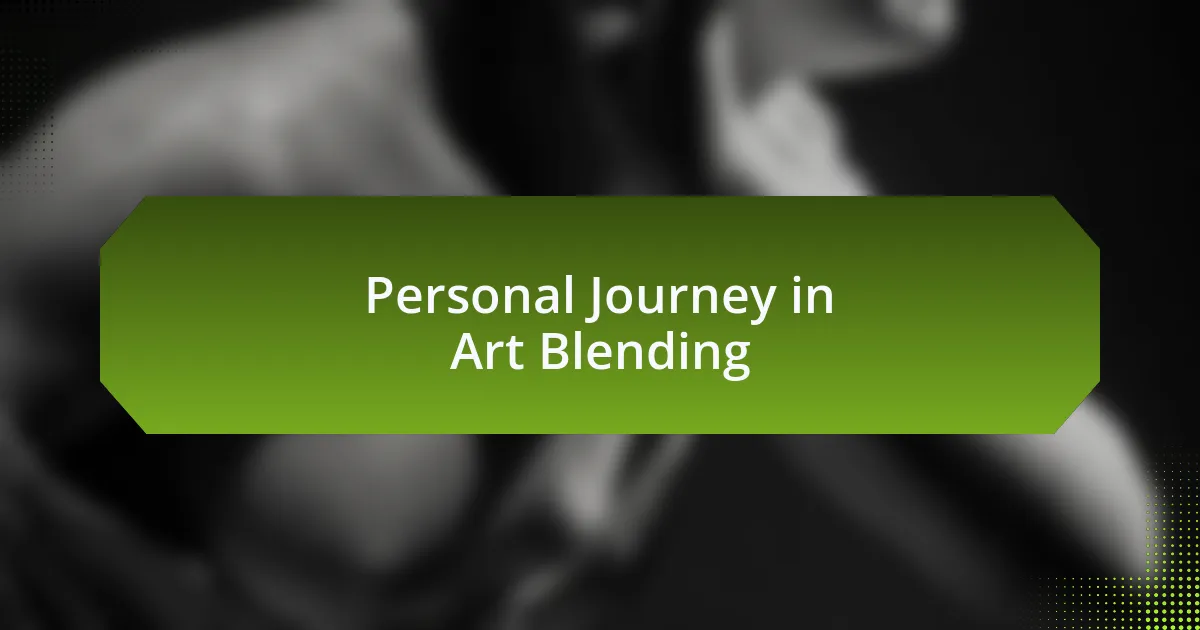
Personal Journey in Art Blending
Art blending has been a transformative journey for me. I remember the initial frustration I felt when trying to merge my appreciation for classical painting techniques with my fascination for contemporary graffiti. One day, while practicing in my studio, I accidentally splattered a vibrant acrylic paint onto a traditional canvas, creating a dynamic interplay of texture and color that opened my eyes to endless possibilities. How often do we limit ourselves by adhering strictly to one style or the other?
As I delved deeper into this fusion of styles, I began experimenting with mixed media. During one of my projects, I layered oil pastels over printed photographs, creating pieces that sparked conversations about identity and heritage. I discovered that this method not only honored the past but also invited a dialogue about the future of art. Have you ever tried combining techniques that initially seemed incompatible?
Through this exploration, I found a profound sense of fulfillment. Each piece I create becomes a reflection of my cultural experiences and emotions. For instance, my latest work, which juxtaposes a traditional landscape with abstract elements, symbolizes my own journey between nostalgia and modernity. It amazes me how blending these worlds not only enriches my artistic expression but also resonates with viewers on a personal level. Have you felt that connection when witnessing contrasting styles coming together in a single artwork?